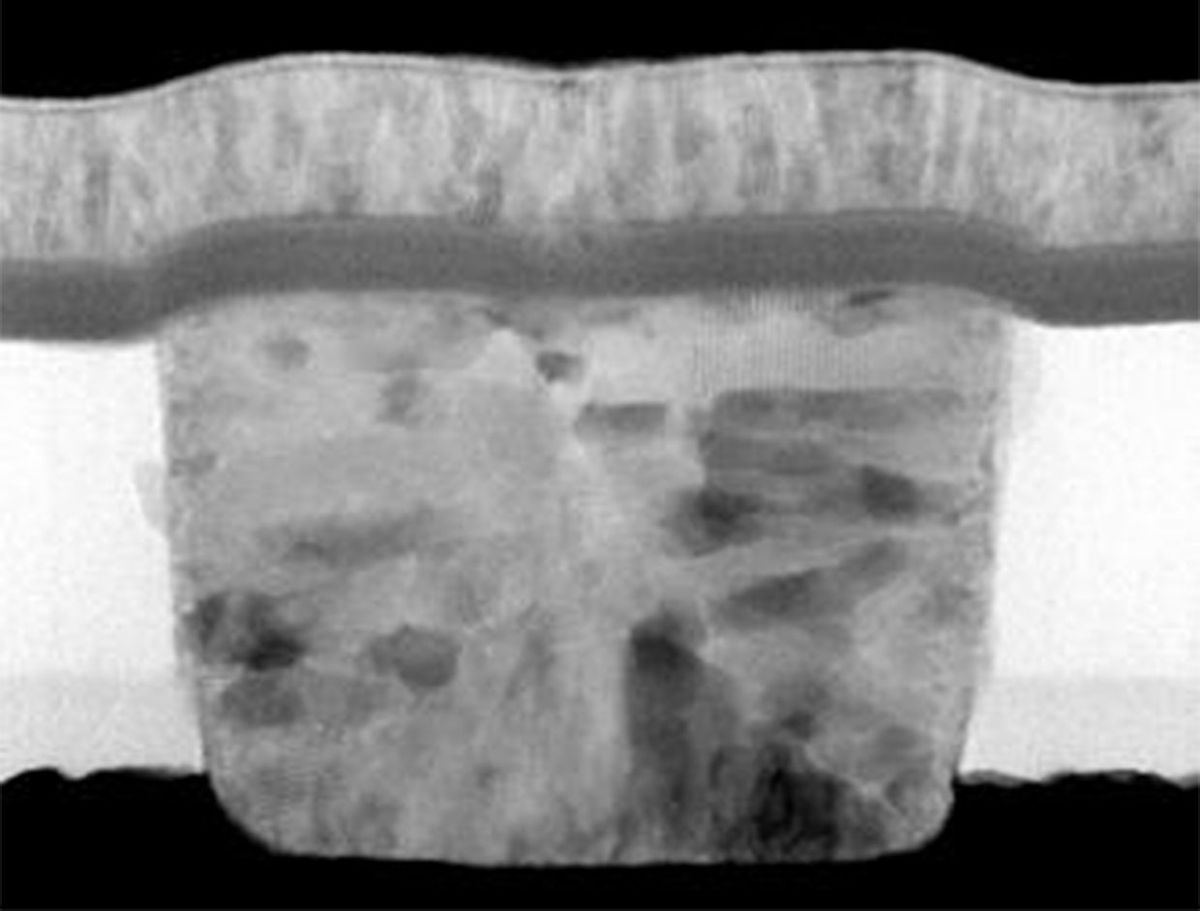One thing that’s kept engineers from copying the brain’s power efficiency and quirky computational skill is the lack of an electronic device that can, all on its own, act like a neuron. It would take a special kind of device to do that, one whose behavior is more complex than any yet created.
Suhas Kumar of Hewlett Packard Laboratories, R. Stanley Williams now at Texas A&M, and the late Stanford student Ziwen Wang have invented a device that meets those requirements. On its own, using a simple DC voltage as the input, the device outputs not just simple spikes, as some other devices can manage, but the whole array of neural activity—bursts of spikes, self-sustained oscillations, and other stuff that goes on in your brain. They described the device last week in Nature.

It combines resistance, capacitance, and what’s called a Mott memristor all in the same device. Memristors are devices that hold a memory, in the form of resistance, of the current that has flowed through them. Mott memristors have an added ability in that they can also reflect a temperature-driven change in resistance. Materials in a Mott transition go between insulating and conducting according to their temperature. It’s a property seen since the 1960s, but only recently explored in nanoscale devices.
The transition happens in a nanoscale sliver of niobium oxide in the memristor. Here when a DC voltage is applied, the NbO2 heats up slightly, causing it to transition from insulating to conducting. Once that switch happens, the charge built up in the capacitance pours through. Then the device cools just enough to trigger the transition back to insulating. The result is a spike of current that resembles a neuron’s action potential.
“We’ve been working for five years to get that,” Williams says. “There’s a lot going on in that one little piece of nanoscale material structure.”
According to Kumar, memristor inventor Leon Chua predicted that if you mapped out the possible device parameters there would be regions of chaotic behavior in between regions where behavior is stable. At the edge of some of these chaotic regions, devices can exist that do what the new artificial neuron does.

Williams credits Kumar with doggedly fine tuning the device’s material and physical parameters to find a combination that works. “You cannot find this by accident,” he says. “Everything has to be perfect before you see this characteristic, but once you’re able to make this thing, it’s actually very robust and reproducible.”
They tested the device first by building spiking versions of Boolean logic gates—NAND and NOR, and then by building a small analog optimization circuit.
There’s a lot of work ahead to turn these into practical devices and scale them up to useful systems that could challenge todays machines. For example, Kumar and Williams plan to explore other possible materials that experience Mott transitions at different temperatures. NbO2’s happens at a worrying 800 C. That temperature is only occurring in a nanometers thin layer, but scaled up to millions of devices, and it could be a problem.
Others have researched vanadium oxide, which transitions at a more pleasant 60 C. But that might be too low, says Williams, given that systems in data centers often operate at 100 C.
There may even be materials that can use other types of transitions to achieve the same result. “Finding the goldilocks material is a very interesting issue,” says Williams.
Samuel K. Moore is the senior editor at IEEE Spectrum in charge of semiconductors coverage. An IEEE member, he has a bachelor's degree in biomedical engineering from Brown University and a master's degree in journalism from New York University.



